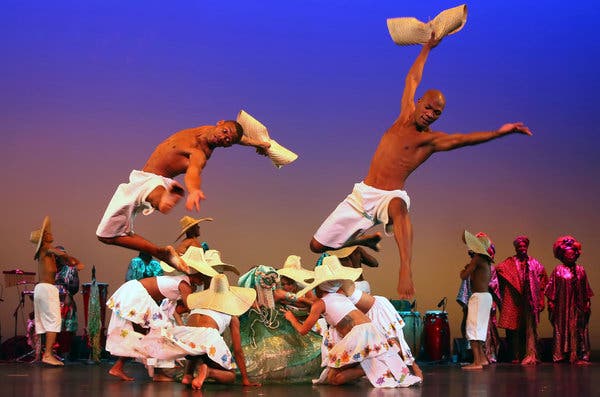As an African, dance is as much a part of my life as eating, drinking and working, but it is also an important part of our worship, following the guidance of the Bible where it is frequently referenced, particularly in the Old Testament. There dance is a form of worship — as a recognition of love and praise of God. It, along with other spiritual exercises, were believed to be accepted by God as satisfactory veneration.
Dance in Africa expresses similar feelings, not only of worship but also of social communication: supplication, passionate relational feelings and even transitional life stages, as persons move from one stage of maturity to another. It also communicates virtues, values and even teachings about social manners that are used to help individuals mature and celebrate.
There are general reasons why dance is so important. It is an experience that moves us beyond the material to the intangible, simply a way we can express ourselves when words are deficient. We can feel the delight of a newly discovered love, assurance in the midst of incredible distress or difficulty, the energetic fire of our childhood, and the serenity of our milder and gentler years.
In Africa what we call cultural or social dance are movements that embody our cultural values and standards. Each cultural dance has a story that reflects certain values or beliefs and thus goes beyond merely learning different types of moves. The movements in a dance, taken together, tell a story that is a way for one culture to share or tell their way of life to another.
To assure the accuracy of the movements that will preserve the integrity of culture, each clan in Nigeria has someone devoted to design and pass along the clan’s customary moves. Because there are unique moves in each clan’s culture, this “dance ace” guarantees that everybody knows what the moves are and how they are to be danced. These instructions are passed down through generations and some have never been adjusted.
Music and dance are such a regular part of daily existence in Africa because music communicates feeling, expresses soul-changing experiences, and even assists in bringing together networks of people who share common values and life experiences — all important values. Dance can build a sense of security and accomplishment and offer opportunities as icebreakers in meeting new people and making new friends.
African dances are usually participatory and each country has many unique styles. Some are really amazing. To name a few: Indlamu from South Africa, related to Zulu culture; Kpanlogo from Ghana; Moribayassa from Guinea; Eskista from Ethiopia; and many others. But, no matter how these dances are specifically conventional, every person who dances them brings her/his unique style and culture into the dance that also mirrors their country and history. It is always exciting to watch the variety of African dance movements and styles.
Besides being an activity for amusement and fun, dance has many health benefits. It reinforces physical and psychological wellness by strengthening balance, posture and flexibility along with assisting with brain development and life moods.
But, there is something very unique about African dance. Although, in general, dance uses a progression of steps and movements to resonate with the speed and beat of a piece of music and coordinates the body in a cadenced manner, most African dances are segregated body movements that can be very hard to organize intellectually.
They are known as polyrhythm and polycentric movements. Emily Willette explains more in “The Africanist Aesthetic in American Dance Forms”:
Polyrhythm is the layering of different rhythms over one another and polycentrism is the idea that movement can initiate from any part of the body. These two qualities play together because different parts of the body dance to different instruments that are playing at different rhythms. [Robert] Farris Thompson describes learning polyrhythm and polycentrism, “my hands and my feet were to keep time with the gongs, my hips with the first drum, my back and shoulders with the second.” All the elements of the music are displayed clearly in the body and nothing is left out. This method of dancing is another way of incorporating and valuing the entire body and bringing together the music and dancing.
Another way of expressing this is that the artist’s body is in some sense separated so that different parts of the body are moving autonomously of each other.
The drum is also a significant part of African dance accompaniment. It very well may be viewed as the heartbeat of a particular clan, expressing its collective state of mind and relating this collective energy with that of the ancestors. Drumming is often accompanied by handclapping or stomping of feet, and is complemented by chanting voices as dancers are moving in disciplined steps.
Unfortunately, dance as a unique aspect of African culture was not so appreciated by the missionaries who came to our countries. After the Second Vatican Council, most African countries began using dance in our liturgies, but now, bishops in some of them are not allowing this important part of our culture and worship. We can only hope that such restrictions will end, recognizing that dance is a biblical action accepted by God as true veneration and love.














